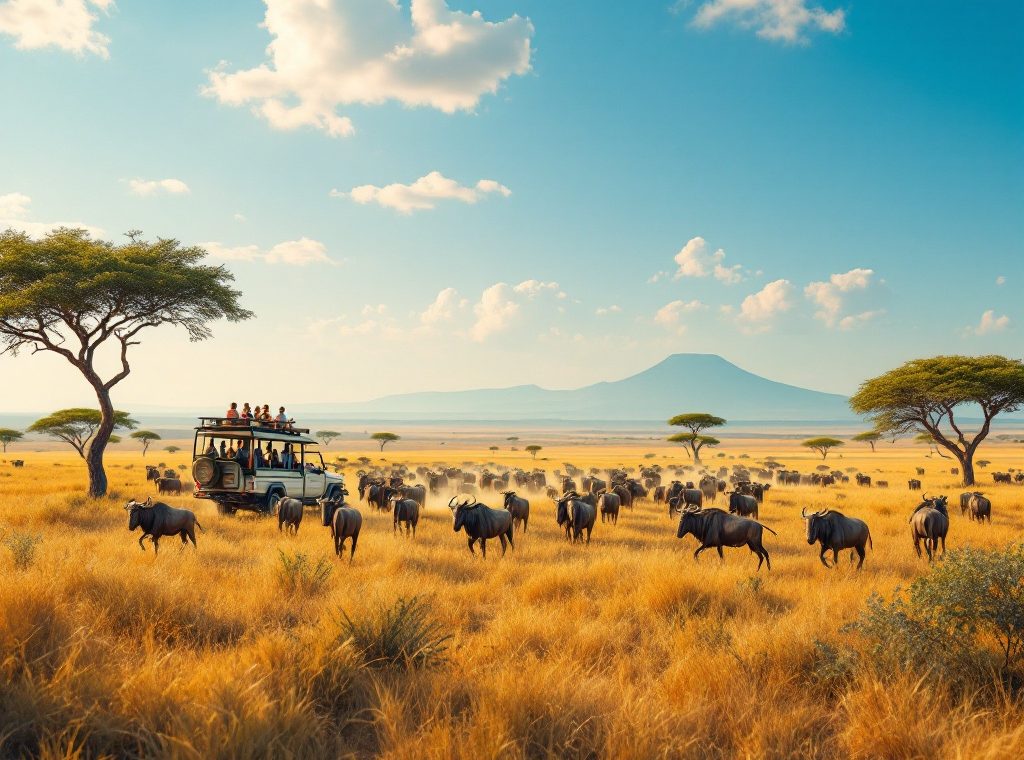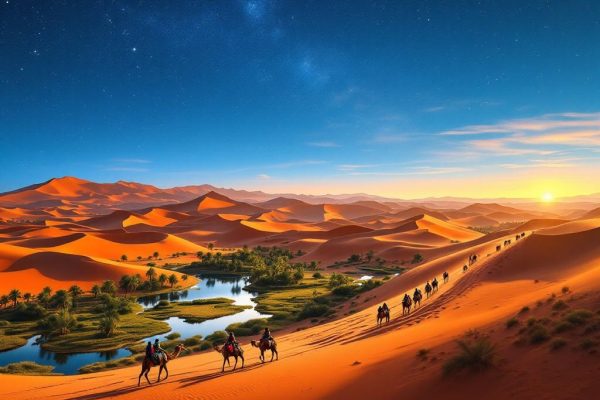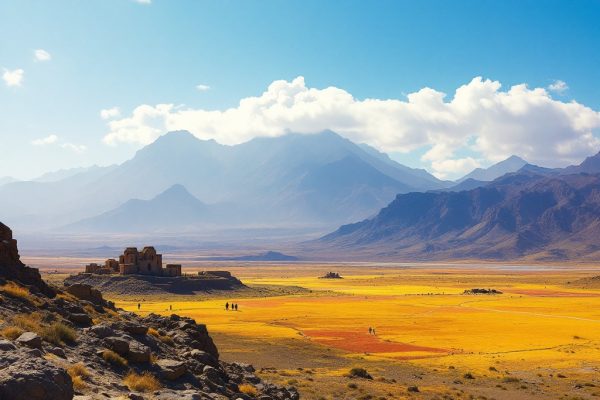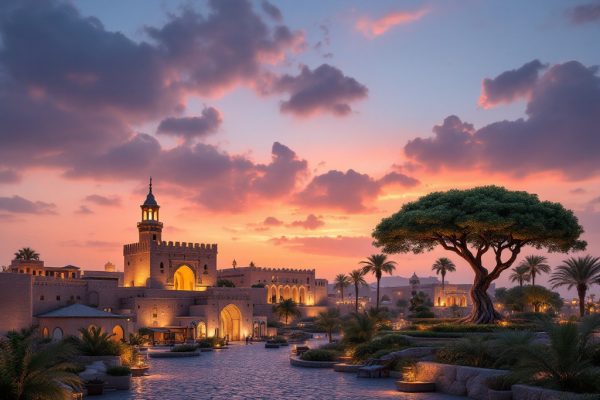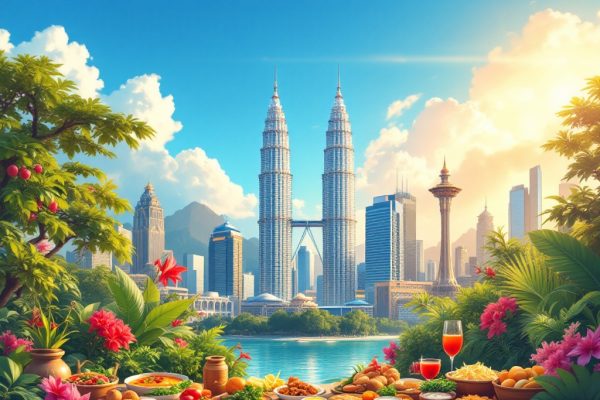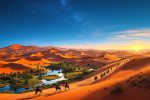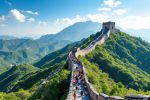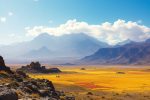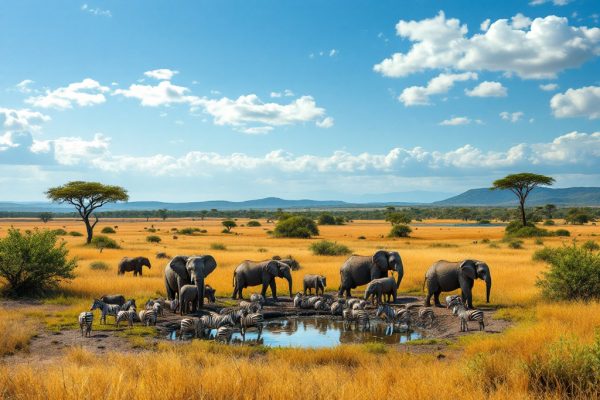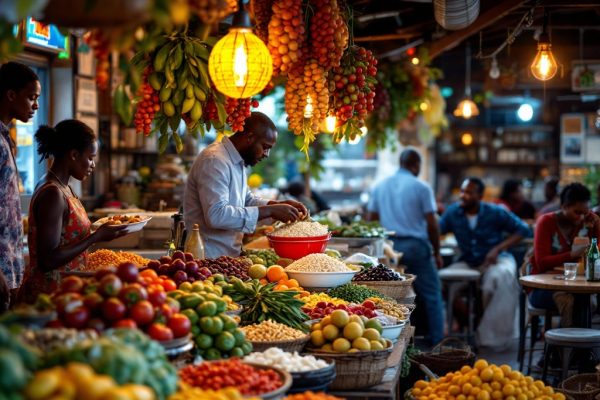Vacation in Kenya: What to Do During Your Journey
Dream of witnessing the Great Migration? Kenya, with its thrilling safaris and pristine beaches, awaits! Learn how to craft the perfect itinerary, from choosing the best time to visit for optimal wildlife viewing to navigating local customs and transportation. Discover essential tips on visas, vaccinations, and safety precautions to ensure a smooth and unforgettable Kenyan adventure. Start planning your dream trip today!
Important information
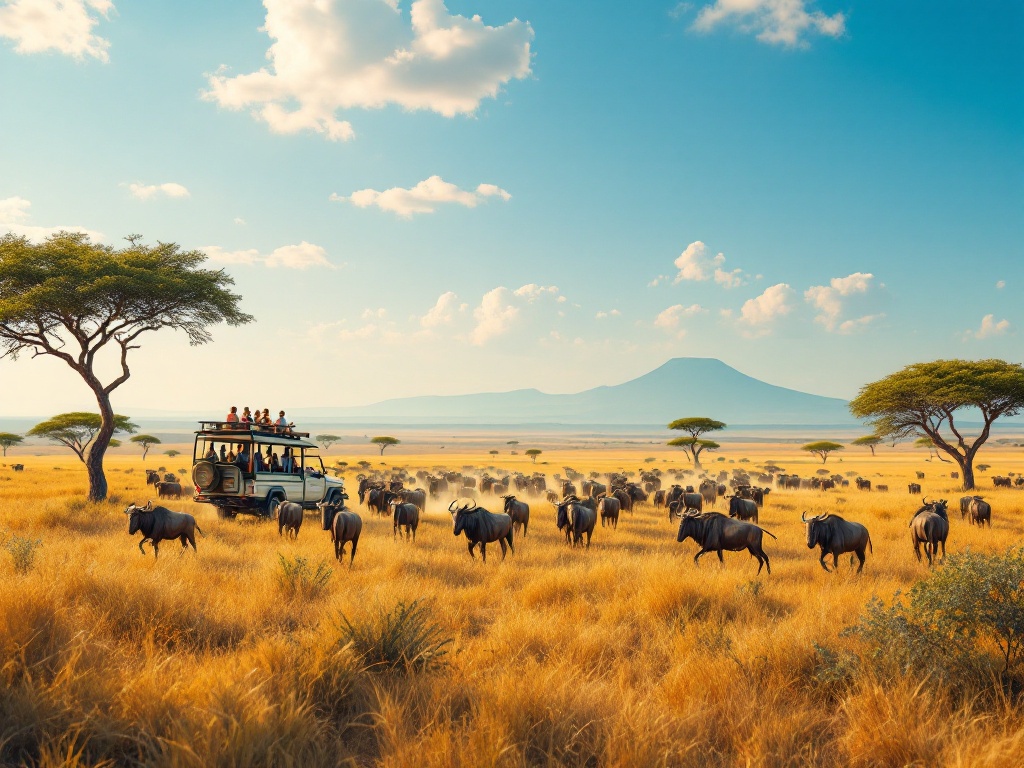
- Kenya offers diverse experiences, from safaris in the Maasai Mara to relaxing on Diani Beach and exploring the unique culture of Lamu Island.
- The dry season (June-October) is ideal for wildlife viewing, including the Great Migration, while the wet season (November-May) offers lush landscapes and birthing season.
- Visitors should prioritize safety, research destinations and local advisories, and consider travel insurance. Learning basic Swahili phrases can enhance interactions with locals. M-Pesa is a secure and convenient mobile money system for transactions.
- Nairobi, the capital, offers attractions like Nairobi National Park, the Giraffe Centre, and the David Sheldrick Wildlife Trust. Jomo Kenyatta International Airport (NBO) is the main entry point.
- Kenya is committed to wildlife conservation, with national parks and conservancies protecting endangered species. Unique animals like Grevy’s zebra and the reticulated giraffe can be found in northern Kenya.
Planning Your Kenya Itinerary
Dreaming of Kenya? From thrilling safaris to pristine beaches, this diverse country offers an unforgettable experience. A well-crafted itinerary is key to unlocking its magic. Consider these essential steps to plan your Kenyan adventure:
Define your interests and travel style. Are you a wildlife enthusiast eager for safari adventures, a culture buff interested in local communities, or a beach lover seeking relaxation? Kenya caters to every taste.
Determine your travel dates and duration. Research the ideal time to visit, considering weather patterns and animal migrations for the best wildlife viewing opportunities.
Book accommodations and tours in advance. Secure your preferred lodging and excursions, especially during peak season, to avoid disappointment. Consider distances between destinations and factor travel time into your plans.
Pack appropriately for Kenya’s diverse climate and your planned activities. Bring comfortable clothing suitable for both warm days and cooler evenings, along with essentials like sunscreen, insect repellent, and a hat.
Learn about local customs and etiquette. Understanding Kenyan culture will enrich your experience and ensure respectful interactions with local communities. Embrace the adventure that awaits in Kenya.
What to Know Before Traveling
Plan your Kenyan adventure by researching destinations, accommodations, and transport options. Consider travel insurance and stay updated on travel advisories. Learning basic Swahili phrases can enrich your interactions with locals. Respect wildlife by observing animals from a safe distance and adhering to park regulations. Support local communities through responsible tourism.
Research destinations, accommodations, and transport options.
Consider travel insurance and stay updated on travel advisories.
Learn basic Swahili phrases to enhance interactions with locals.
Respect wildlife by observing animals from a safe distance and adhering to park regulations.
Support local communities through responsible tourism practices.
Understanding the Visa and Vaccination Requirements
Planning a trip to Kenya? Ensure a smooth trip by preparing your visa and vaccinations. Citizens of 145 countries require a visa before arrival. Contact your local Kenyan embassy or consulate for the most current visa information. Recommended vaccinations are crucial for your health and well-being during your travels. Consult your healthcare provider or a travel clinic for personalized vaccination recommendations.
Essential Travel Tips for Kenya
Pack US dollars, which are widely accepted. Be prepared for varied weather conditions by packing layers. Research local customs to enrich your travel experience. Prioritize safety by staying informed about local advisories and taking necessary precautions. Travel insurance is recommended for unforeseen issues. Engage respectfully with local communities and support local businesses. Choose eco-friendly options like carrying a reusable water bottle to minimize your environmental impact.
Best Time to Visit Kenya
Kenya’s diverse climates determine the ideal time for your visit. For optimal wildlife viewing and witnessing the Great Migration in the Maasai Mara, visit during the dry season from June to October. If you prefer a less crowded experience with lush landscapes, consider November and December, despite potential short rains and slightly more elusive wildlife. Alternatively, the warm months of January to March are perfect for beach getaways and offer excellent wildlife viewing as animals congregate near water sources.
Exploring Kenya’s Three Distinct Climates
Kenya experiences a variety of climates. Coastal regions, such as Mombasa and Lamu, are characterized by hot and humid weather. The central highlands, including Nairobi and Nakuru, offer a more temperate climate with warm days and cool nights. Northern and eastern areas, like Samburu and Tsavo, are arid and semi-arid, experiencing high temperatures and little rainfall.
Seasonal Activities and Wildlife Viewing Opportunities
Kenya’s dramatic weather variations significantly influence wildlife viewing opportunities. The dry season (June to October) concentrates animals around dwindling water sources, making them easier to spot. This period also coincides with the Great Migration in the Maasai Mara, typically from July to October. Contrastingly, the wet season (November to May) offers the vibrant beauty of lush vegetation and is also birthing season, adding another dimension to wildlife sightings. Lake Nakuru National Park, famed for its flamingos, becomes particularly spectacular during this time as algal blooms provide a vibrant feast for the birds. Each season offers a distinct and captivating glimpse into Kenya’s diverse wildlife.
Dry Season (June-October)
- Animals concentrate around water sources, making them easier to spot.
- The Great Migration occurs in the Maasai Mara (July-October).
Wet Season (November-May)
- Lush vegetation creates vibrant scenery.
- Birthing season offers unique wildlife sightings.
- Lake Nakuru’s flamingos thrive due to algal blooms.
Navigating Kenya: Transportation and Safety Tips
Getting around Kenya is easy, but safety should be your top priority. Public transport offers budget-friendly options, with matatus (minibuses) readily available for short trips. For faster, but potentially riskier travel, boda bodas (motorcycle taxis) are an option. For longer distances, domestic flights are recommended. If comfort and security are key, consider private cars or tour operators.
Planning Your Trip
Careful planning is crucial for a safe journey. Research your destination thoroughly and check local advisories. Avoid walking alone at night, and keep your valuables secure, especially on public transport. Share your itinerary with someone you trust and make sure you have travel insurance.
Connecting with Locals
Learning basic Swahili phrases can enrich your experience and show respect. Try greetings like “Habari gani?” (How are you?) and expressing gratitude with “Asante” (Thank you).
Utilizing Public Transportation: Matatus, Boda Bodas, and More
Traveling in Kenya offers diverse options. For short trips, boda bodas (motorcycle taxis) provide quick, convenient rides. Matatus, privately owned minibuses, are a popular and affordable way to travel throughout the country. Buses and domestic flights cater to longer journeys. Trains offer scenic routes between major cities. Independent travelers can also rent a car for flexible exploration.
Mobile Payments and Currency: Kenyan Shilling and M-Pesa
In Kenya, the official currency is the Kenyan shilling (KES), but US dollars are often accepted in tourist areas. However, for better prices, especially in local markets, using Kenyan shillings or the popular mobile money system, M-Pesa, is recommended. M-Pesa offers a secure and convenient way to handle smaller transactions, pay for goods, transfer funds, and even access microloans. It, along with Kenyan shillings, can contribute to a smoother travel experience.
Safety Precautions and Comfort During Your Journey
Meticulous planning is essential for a safe and enjoyable trip. Research accommodations thoroughly, prioritizing safety and reputation. Avoid isolated areas, especially at night.
Protect your belongings by securing valuables and sharing your itinerary with a trusted contact. This ensures someone is aware of your location throughout your trip.
Engage with locals respectfully and cautiously. Learning basic Swahili demonstrates cultural sensitivity and can enhance your interactions.
Utilize reliable transportation and be mindful of local customs. Adhering to local guidelines ensures a smoother and safer travel experience.
Invest in travel insurance and stay informed about travel advisories. Being prepared for unforeseen circumstances is crucial for a worry-free journey.
Exploring Nairobi: The Gateway to Kenya
Nairobi, Kenya’s bustling capital, is a launchpad for adventure. Most international flights arrive at Jomo Kenyatta International Airport (NBO), but the excitement begins right in the city. Nairobi offers unique attractions:
- Nairobi National Park: Witness an unparalleled wildlife experience with lions and zebras roaming within city limits.
- Giraffe Centre: Enjoy a close encounter with giraffes at this must-see destination.
- David Sheldrick Wildlife Trust: Visit a sanctuary for orphaned elephants and experience a truly moving encounter.
Arriving at Jomo Kenyatta International Airport
Jomo Kenyatta International Airport (NBO) is Kenya’s main airport for international travelers. You have several ground transportation choices, including taxis, ride-sharing apps, and airport shuttles. For a better and safer trip, consider booking a private transfer in advance.
Visiting Nairobi National Park
Just outside Nairobi, Kenya’s bustling capital, lies the unique sanctuary of Nairobi National Park. Here, visitors experience an incredible juxtaposition: amazing wildlife against the dramatic backdrop of the city skyline.
Discover the Giraffe Centre and Rothschild Giraffes
Experience an unforgettable encounter with endangered Rothschild giraffes at the Giraffe Centre in Nairobi. Get up close and personal with these gentle giants while supporting the centre’s vital conservation efforts. This is a unique opportunity to learn about these majestic creatures and contribute to their protection.
Experience the David Sheldrick Wildlife Trust
The David Sheldrick Wildlife Trust rescues orphaned elephants and rhinos, providing rehabilitation and a chance at a new life. Visitors can witness this incredible work firsthand, learning about these magnificent creatures and observing their dedicated care. It’s a truly educational experience.
Safari Adventures in Maasai Mara National Reserve
Experience the thrill of a Maasai Mara safari in Kenya, a wildlife haven teeming with diverse fauna. Witness the Great Migration, a breathtaking spectacle where millions of wildebeest and zebras journey across the plains. The reserve is also home to the “Big Five”: lions, leopards, elephants, rhinoceroses, and Cape buffalo. Birdwatchers will be captivated by the abundant avian life. Expert-led guided tours provide insights into this fascinating ecosystem. For an unforgettable experience, take a hot air balloon safari and marvel at the wildlife from above. Immerse yourself in the rich culture of the Maasai people.
What to Expect on a Wildlife Safari
Embark on a Maasai Mara safari for thrilling wildlife encounters, including the Great Migration, a breathtaking spectacle of millions of wildebeest and zebras. The reserve also boasts the “Big Five”: lions, leopards, elephants, buffaloes, and rhinoceroses. A rich tapestry of birdlife adds to the vibrant ecosystem, alongside giraffes, cheetahs, and hippos roaming the scenic landscape. Witness nature’s diversity in all its glory, from predators stalking their prey to herds of herbivores grazing peacefully across the plains. Experience the magic of the Maasai Mara, where every game drive promises a new adventure.
Experience a Hot Air Balloon Ride Over Maasai Mara
Experience an unparalleled perspective of the Maasai Mara with a hot air balloon safari. Enjoy sweeping views of the reserve’s diverse landscapes teeming with incredible wildlife. Witness the Great Migration’s wildebeest herds thundering across the plains, or spot elusive predators like lions and cheetahs from your unique vantage point. The breathtaking scenery makes for an unforgettable and truly remarkable adventure.
Insights into the Maasai Village Cultural Immersion
Visiting a Maasai village offers an unforgettable cultural immersion. Experience vibrant dances and songs, along with captivating storytelling that reveals their rich history, customs, and social structures. This immersive experience fosters a deep appreciation for the Maasai’s unique way of life.
Discovering the Great Rift Valley and Its Attractions
The Great Rift Valley boasts stunning landscapes and remarkable wildlife. Lake Nakuru National Park, a haven for birds, draws massive flocks of flamingos. The valley offers more than just birdwatching, however. Hell’s Gate National Park thrills adventurers with hiking and biking amidst towering cliffs and gorges. Lake Naivasha enhances the valley’s appeal, teeming with hippos and fish eagles. On Crescent Island, visitors enjoy the unique experience of walking among the animals.
Visiting Lake Nakuru National Park
Lake Nakuru National Park is famous for its soda lake, which attracts impressive flocks of flamingos and pelicans. The park offers diverse ecosystems, from lush forests and open grasslands to dramatic rocky cliffs. Lake Nakuru is also an important sanctuary for both black and white rhinos, where they thrive under protection.
Exploring Lake Naivasha and Crescent Island
Experience an unforgettable boat trip across Kenya’s Lake Naivasha, encountering hippos in their natural habitat. Located in the Rift Valley, this freshwater lake offers breathtaking views, amplified by the enchanting Crescent Island. This privately owned sanctuary harbors diverse wildlife with a unique advantage: the absence of predators.
Enjoy walking safaris among zebras and giraffes without the threat of lions or leopards. This safe and intimate experience allows close encounters with African wildlife.
Crescent Island also boasts a remarkable variety of bird species, making Lake Naivasha a truly unforgettable destination.
Adventures in Hell’s Gate National Park
Experience the thrill of a biking safari in Hell’s Gate National Park. Explore the park’s stunning landscape on two wheels, enjoying up-close wildlife encounters and breathtaking views.
Relaxing and Unwinding at Kenyan Beaches
Diani Beach enchants visitors with its stunning white sand and crystal-clear turquoise water.
For a more tranquil escape, Tiwi Beach offers secluded beauty enhanced by lush coastal forests.
History buffs and relaxation seekers alike will appreciate Lamu, a unique UNESCO World Heritage site. Whether you prefer swimming, sunbathing, or exhilarating water sports, these coastal havens offer something for every traveler.
Discovering Diani Beach: A Tropical Paradise
Diani Beach offers pristine white sand and vibrant marine life, perfect for relaxation. Thrill-seekers can enjoy activities like kite surfing and scuba diving. Exploring the nearby coral reefs, teeming with colorful fish and fascinating creatures, is a must. Diani Beach truly has something for everyone.
Exploring Tiwi and Lamu for Tranquil Escapes
Kenya’s Tiwi Beach, just south of Mombasa, offers stunning beaches and vibrant culture. With breathtaking white sands and coral reefs, it’s perfect for snorkeling, windsurfing, and exploring diverse marine life.
Tiwi Beach
Experience the beauty of Tiwi Beach, located south of Mombasa. This coastal paradise boasts breathtaking white sands and vibrant coral reefs, making it an ideal destination for snorkeling and windsurfing enthusiasts. Explore the diverse marine life and soak up the sun on pristine shores.
Lamu Island
For a unique cultural immersion, discover Lamu Island, a UNESCO World Heritage site. Step back in time and explore the distinctive Swahili architecture of Lamu Old Town. Witness the charm of donkey-drawn carts and traditional dhow sailing boats. Relax on the beautiful Shela Beach or visit the impressive Lamu Fort for a truly captivating experience.
Understanding Kenyan Culture and Language
Kenya’s official languages are Swahili and English. Swahili serves as the unifying language, while English is used for business and government. Swahili, a Bantu language, connects all Kenyans.
Coastal Culture
Along Kenya’s coast, the Swahili culture thrives, blending African, Arab, and Asian influences.
Northeastern Culture
The northeast, in contrast, is predominantly Somali, rich in nomadic traditions.
Further enriching this cultural tapestry are traditions from diverse ethnic groups, including: the Kikuyu, Luhya, Luo, Kalenjin, and Kamba.
Kenyan cuisine offers delightful experiences. Staples include ugali (cornmeal porridge) and nyama choma (grilled meat), both national favorites. Irio, a mix of mashed potatoes and peas, is another popular dish. Traditional dances, varying by region and tribe, enhance this cultural vibrancy. These dances, with vibrant costumes and rhythmic movements, accompany ceremonies and celebrations.
Embracing Swahili and English Languages
Kenya boasts both Swahili and English as its official languages. While English is essential for higher education and business, Swahili, a Bantu language, serves as the national language, uniting Kenya’s diverse population. Many Kenyans are multilingual, often communicating in their tribal languages in addition to Swahili and English. This rich linguistic tapestry reflects Kenya’s vibrant culture and its history of intercultural exchange.
Experiencing Swahili and Somali Cultures
Kenya’s coast vibrates with the energy of Swahili culture, a blend of African, Arab, and Asian influences. This heritage is reflected in their language, music, and cuisine. The architecture, with coral stone buildings and carved doors, speaks of a rich history.
Coastal Kenya
Experience the Swahili culture:
- explore the fusion of African, Arab, and Asian influences,
- discover the unique language, music, and cuisine,
- admire the stunning architecture of coral stone buildings and intricately carved doors.
Northeastern Kenya
Discover the Somali community:
- witness their strong pastoralist traditions,
- learn about their camel herding and nomadic lifestyle,
- appreciate their vibrant, patterned clothing.
Immerse yourself in the local customs and explore unique artistic expressions. Savor Swahili cuisine or experience the nomadic life of the Somali people for unforgettable memories.
Indulging in Kenyan Cuisine and Traditional Dance Performances
Kenyan cuisine offers a delicious array of dishes. Some popular options include nyama choma (roasted meat) and irio, a flavorful mash of peas and potatoes. Ugali, a cornmeal porridge, is a staple food.Kenya also boasts a rich heritage of traditional dances, often showcased at cultural events and celebrations. These dances vary regionally and tribally. The Maasai are known for their energetic adumu jumping dance. The coastal regions feature the vibrant chakacha. Numerous other unique dances contribute to Kenya’s diverse cultural tapestry.
Conservation Efforts and Wildlife Protection in Kenya
Kenya is deeply committed to protecting its incredible wildlife, actively combating poaching and upholding a ban on trophy hunting. National parks and conservancies, such as the Maasai Mara, Amboseli, and Tsavo, are crucial to these efforts. They provide safe havens for iconic species like lions, elephants, and rhinos, as well as unique animals like Grevy’s zebra and the reticulated giraffe. Beyond these parks, dedicated organizations and local communities play a vital role in preserving Kenya’s natural heritage. Visitors can experience this conservation firsthand through organized safaris and sanctuary visits, witnessing the work being done to ensure these magnificent animals thrive for generations to come.
Understanding Wildlife Conservation and Anti-Poaching Initiatives
Kenya, famous for its stunning wildlife, is deeply committed to conservation. This dedication protects endangered species like elephants and rhinos, constantly threatened by poaching. Kenya combats this through tireless work and crucial community involvement in conservation programs. A network of national parks and conservancies forms the heart of Kenya’s strategy, providing safe havens for its precious wildlife.
Exploring National Parks and Conservancies
Kenya’s dedication to wildlife conservation shines through its numerous national parks and conservancies. These protected areas preserve diverse ecosystems and safeguard endangered species, offering unparalleled wildlife viewing opportunities.
Maasai Mara National Reserve
Renowned for the spectacular Great Migration.
Tsavo East National Park
Home to vast and impressive elephant herds.
Conservancies, such as Lewa, play a vital role in protecting specific species like the black rhino and Grevy’s zebra. These protected spaces also contribute significantly to ecotourism, generating revenue for local communities and supporting ongoing conservation efforts. Furthermore, they serve as valuable educational platforms, raising awareness about biodiversity and promoting sustainable practices. Kenya’s commitment is truly making a positive impact.
Unique Wildlife Sightings: Grevy’s Zebra, Reticulated Giraffe, and More
Journey to northern Kenya and witness incredible wildlife, like the Grevy’s zebra with its distinctive narrow stripes and large, rounded ears. You’ll also find the reticulated giraffe, easily identified by its net-like coat pattern. Another fascinating creature is the gerenuk, a long-necked antelope. Keep an eye out for the Somali ostrich, recognizable by its blue-gray legs. Kenya offers a truly remarkable experience for anyone who appreciates the wonders of the animal kingdom.
- Grevy’s zebra: known for its narrow stripes and large, rounded ears.
- Reticulated giraffe: identifiable by its net-like coat pattern.
- Gerenuk: a long-necked antelope.
- Somali ostrich: recognizable by its blue-gray legs.

